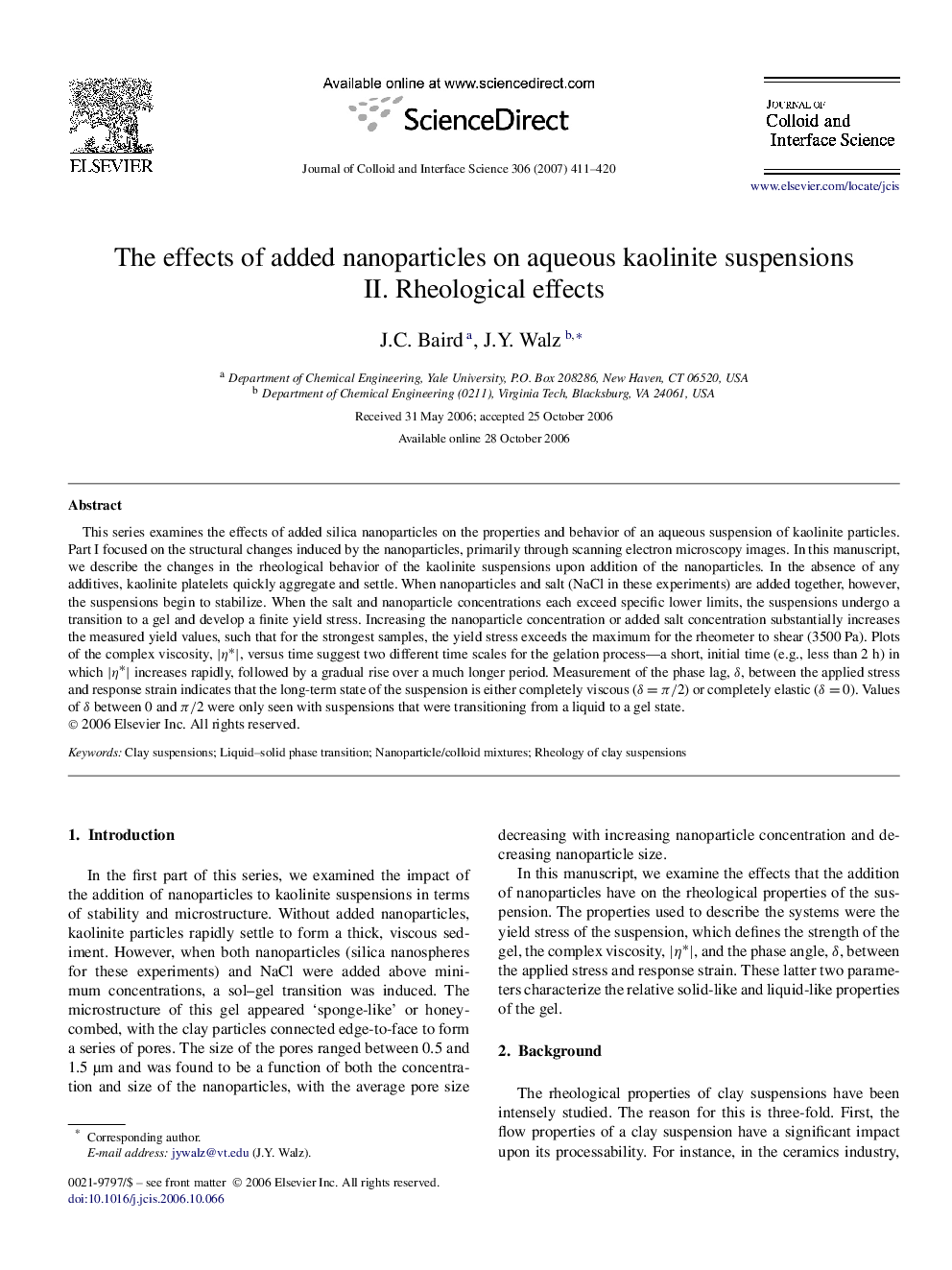| کد مقاله | کد نشریه | سال انتشار | مقاله انگلیسی | نسخه تمام متن |
|---|---|---|---|---|
| 612775 | 880706 | 2007 | 10 صفحه PDF | دانلود رایگان |

This series examines the effects of added silica nanoparticles on the properties and behavior of an aqueous suspension of kaolinite particles. Part I focused on the structural changes induced by the nanoparticles, primarily through scanning electron microscopy images. In this manuscript, we describe the changes in the rheological behavior of the kaolinite suspensions upon addition of the nanoparticles. In the absence of any additives, kaolinite platelets quickly aggregate and settle. When nanoparticles and salt (NaCl in these experiments) are added together, however, the suspensions begin to stabilize. When the salt and nanoparticle concentrations each exceed specific lower limits, the suspensions undergo a transition to a gel and develop a finite yield stress. Increasing the nanoparticle concentration or added salt concentration substantially increases the measured yield values, such that for the strongest samples, the yield stress exceeds the maximum for the rheometer to shear (3500 Pa). Plots of the complex viscosity, |η∗||η∗|, versus time suggest two different time scales for the gelation process—a short, initial time (e.g., less than 2 h) in which |η∗||η∗| increases rapidly, followed by a gradual rise over a much longer period. Measurement of the phase lag, δ , between the applied stress and response strain indicates that the long-term state of the suspension is either completely viscous (δ=π/2δ=π/2) or completely elastic (δ=0δ=0). Values of δ between 0 and π/2π/2 were only seen with suspensions that were transitioning from a liquid to a gel state.
The addition of silica nanoparticles and sodium chloride induced a sol–gel transition in aqueous kaolinite suspensions. The gels displayed relatively strong yield stresses that increased with both salt and nanoparticle concentration.Figure optionsDownload as PowerPoint slide
Journal: Journal of Colloid and Interface Science - Volume 306, Issue 2, 15 February 2007, Pages 411–420